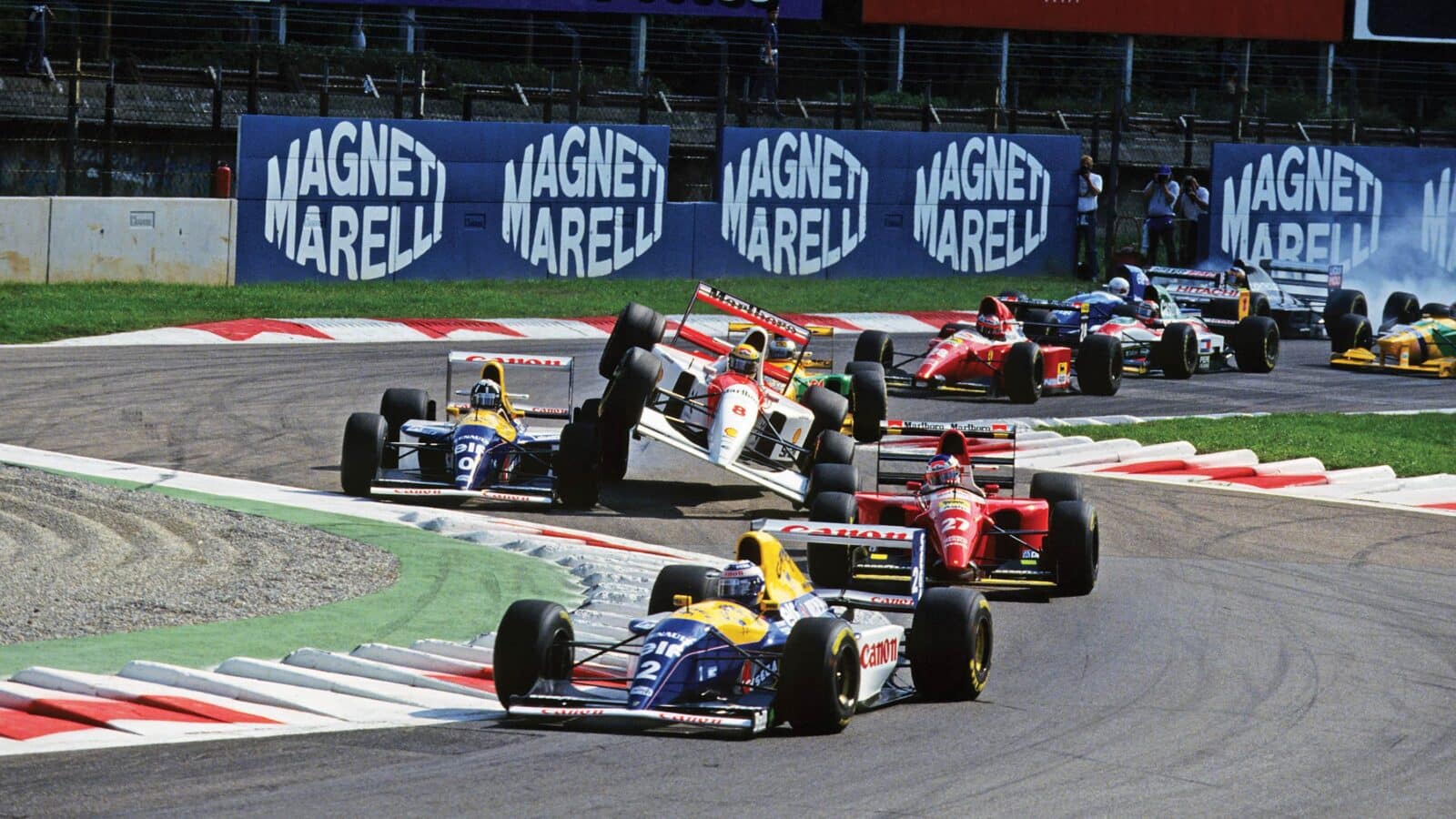1993 F1 season: Grid reaches a tech zenith as Williams wipes the floor
Alain Prost wins his fourth F1 world championship in what may be the most advanced F1 car ever built

Polesitter Prost leads the traffic at the start of the Italian GP in the formidable Williams, but it was Damon Hill’s FW15C – here clipping Senna – that finished with maximum points
DPPI
There was neither an epic world championship fight, with Alain Prost taking his fourth and final title at a canter, nor a deluge of classic races, but some great seasons aren’t defined by this. Instead, 1993 marked the apotheosis of grand prix racing and an inflection point changing the direction of Formula 1 in profound ways. It really would never be quite the same again.
This was the final season when F1 could claim to be an unfettered battle of technology. While regulatory constraints had slowly tightened for decades, the ‘gizmo’ cars of 1993 were the last of the breed of racers pushing harder at the limits of technology than the artificial boundaries of the rules. As Motor Sport itself declared on its cover in November 2023, the 1993 season – exemplified by the all-conquering Williams-Renault FW15C – was peak F1.
Equipped with traction control, active suspension and ABS, the FW15C was, relative to the science of the time, the most high-tech F1 car ever. Yes, today’s understanding of the detail of aerodynamics, tyres and the baffling array of parameters dictating the performance of a car is far deeper but the horizons are so much closer. The 1993 cars were almost mythical beasts, fuelling the growing public discourse that they could ‘drive themselves’. It was a nonsensical notion – just look at how difficult accomplished drivers such as Prost struggled to take to the style demanded of the active ride cars, but one infecting policy.
The ban on gizmos at the end of the season, the consequence of a political battle that briefly led to every car competing except the backmarker Scuderia Italia Lolas being declared illegal in Canada, was not only a consequence of cost but also the recognition of FIA president Max Mosley and ringmaster Bernie Ecclestone that they diminished the gladiatorial role of drivers. The discourse about preserving the driver’s input and ensuring a more spectacular show – for as Ayrton Senna argued, with unwitting tragic foreshadowing, “more cars spinning is more excitement for the viewers, and for us, if nothing happens to the drivers” – became hardwired into the decision-making process and remains so to this day.
That was the grand narrative of 1993, but there were supplementary storylines of significance on track. The final battles of Prost and Senna, the rise of Benetton and Michael Schumacher as a prelude to their title wins, Damon Hill’s arrival, Mika Häkkinen making his mark at McLaren and the start of Jean Todt’s Ferrari revolution shaped what was to follow over the coming years. But none changed F1’s direction so significantly as the ban on gizmos.
The rule changes for 1994 also closed off ongoing test programmes such as the Williams CVT transmission and Benetton’s four-wheel steering, changing the character of Formula 1 forever. There would be faster cars, but never again machines that were fully in the original spirit of grand prix racing. That’s why it should, and indeed must, be remembered as a great season even if few would cite it as a classic on-track.
